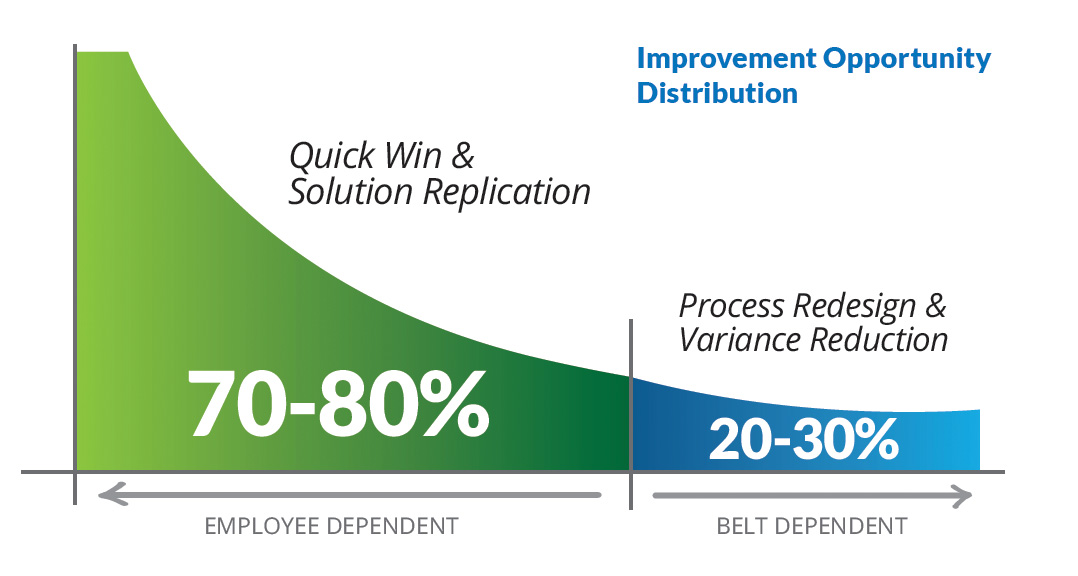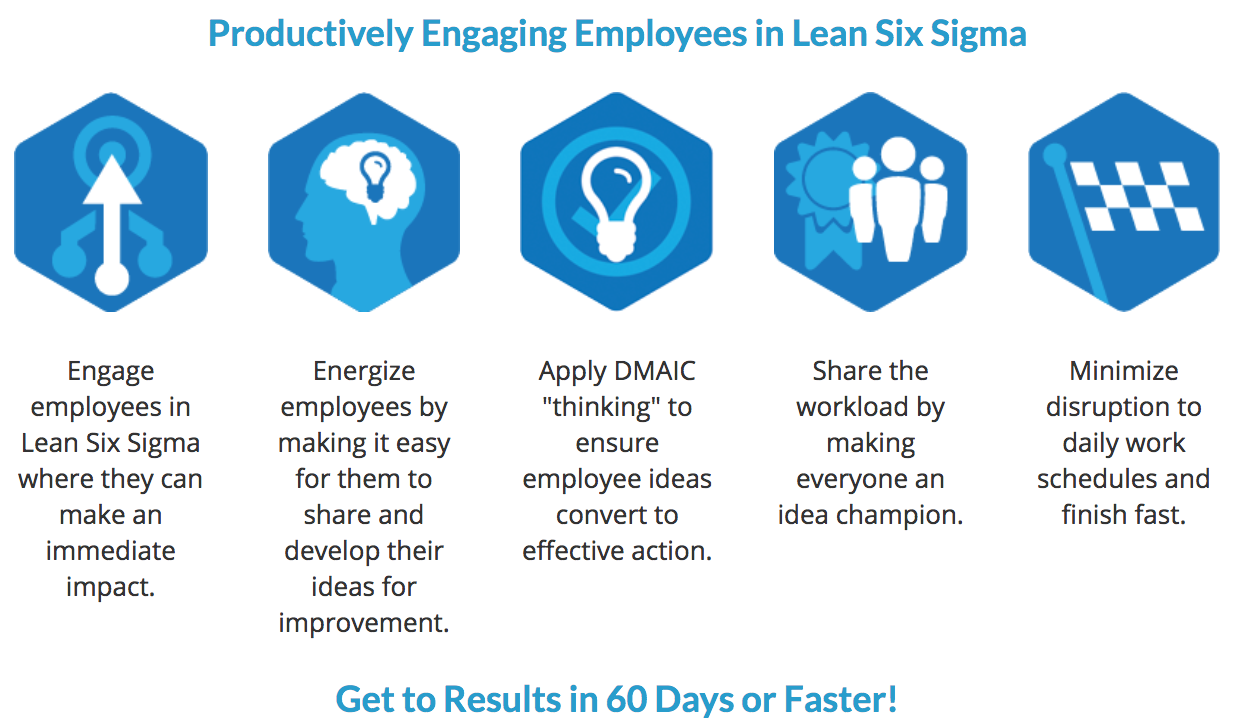The fad stage may be over, but Lean Six Sigma remains the most widely-deployed quality and process improvement method in large organizations. In the face of tighter budgets and greater pressure for results, however, Lean Six Sigma deployment leaders need to embrace innovative ways of engaging their organizations in continuous improvement, but without the expense associated with conventional Lean Six Sigma staffing and training. Read how a growing number of organizations have found the answer to sustaining and expanding Lean Six Sigma results by taking a different approach to engaging the rank and file in Lean Six Sigma "thinking and doing."
In spite of its many publicized successes and its acceptance as the gold standard of continuous improvement methods, Lean Six Sigma is no longer seen as a "no brainer" investment by executives. Over the past five years, many organizations with highly-publicized deployments have reduced their ranks of full-time Black Belts, while simultaneously abandoning the expectation that every manager and employee receives training and participates in Lean Six Sigma projects.
The big gap for Lean Sigma is with the rest of the organization, which is often left sitting on the sidelines of the improvement game.
The problem with Lean Six Sigma is not the methodology. The strategy of equipping a small cadre of internal experts (Black Belts) to lead projects aimed at resolving complex process problems requiring statistical analysis has been proven effective time and again. The big gap for Lean Six Sigma is with the rest of the organization, which is often left sitting on the sidelines of the improvement game. Most rank-and-file managers and employees in today's time pressured, downsized workplaces see Lean Six Sigma as something "I just don't have time to deal with."
The consequences of low employee engagement in Lean Six Sigma (reported to be less than 10% for Lean Six Sigma organizations according to a study by the American Quality Foundation) is money left on the table when measured on the basis of improvement opportunities. As depicted in the illustration below, a greater percentage of an organization's improvement opportunities do not require typical Black Belt study and analysis.

However, capturing these "low fruit" or quick win opportunities (as referred to in Lean Six Sigma parlance) requires a reliable, cost-effective and motivating approach for engaging employees.
The answer to closing Lean Six Sigma's employee engagement gap and resulting lost opportunity to boost results is not training more Green Belts (non-full-time Lean Six Sigma project leaders) or moving Lean Six Sigma training online to increase access and reduce cost. A study conducted by Leap Technologies involving 50 of the largest Lean Six Sigma deployments in the U.S. found that Lean Six Sigma project completion by newly-trained Green Belts was less than 50%, and the number completing a second project was no more than 15%.
Our experience over the past two decades with more than 5,000 frontline improvement teams across a wide array of industries and cultures indicates that the biggest (and often, least-recognized) barrier to greater employee engagement in Lean Six Sigma is low employee motivation, which is often driven by the following human factors:
What's missing in conventional Lean Six Sigma deployments is a complementary method and reliable toolkit designed to motivate and sustain productive employee engagement.
Lean Six Sigma's conventional DMAIC (Define, Measure, Analyze, Improve & Control) project methodology, as well as simplified variations such as the A3 Process popularized by Toyota, are rooted in a scientific, data-based approach to problem-solving. These methods are very effective at finding root causes and testing solutions. In the hands of inexperienced Belts, however, these methods can be detrimental to the cause of inspiring employee engagement, especially given the time demands, ease of understanding, and level of personal satisfaction experienced.
What's missing in conventional Lean Six Sigma deployments is a complementary method and reliable toolkit designed to motivate and sustain productive employee engagementengagement that pulls rather than pushes employees toward Lean Six Sigma thinking and practice.
Organizations with the most success sustaining and expanding their Lean Six Sigma deployments engage more employees in projects (without excessive training expenses or unsupportable overhead in full-time Black Belts) by operating with the following principles:

Over the last decade, Leap Technologies has had the opportunity to work with several Lean Six Sigma Deployment Leaders on issues related to low employee engagement. Our Rapid Action process and toolkit has proven to be a highly-profitable way to engage small teams of employees in rapid problem-solving and solution implementation, and in a way "pulls rather than pushes" employees to adopt Lean Six Sigma thinking into their jobs and interactions.
Bob Crescenzi, a nationally recognized Lean Six Sigma Deployment Leader for a number of Fortune 500 companies over the past 15 years, pioneered the integration of Rapid Action into Lean Six Sigma. As Crescenzi explains, "While I was attracted to Lean Six Sigma early on as a more structured and measureable method for driving improvement using expert change agents, I was uncomfortable with the lack of attention to frontline employee engagement."
By providing a method that effectively addresses the psychology of change, we've unlocked employee willingness to participate as full partners in Lean Six Sigma improvement and delivered bigger returns on investment.
"That's why I partnered with Leap Technologies to seamlessly integrate their Rapid Action toolkit and team process into my Lean Six Sigma Deployments. By providing a method that effectively addresses the psychology of change, we've unlocked employee willingness to participate as full partners in Lean Six Sigma improvement and delivered bigger returns on investment."